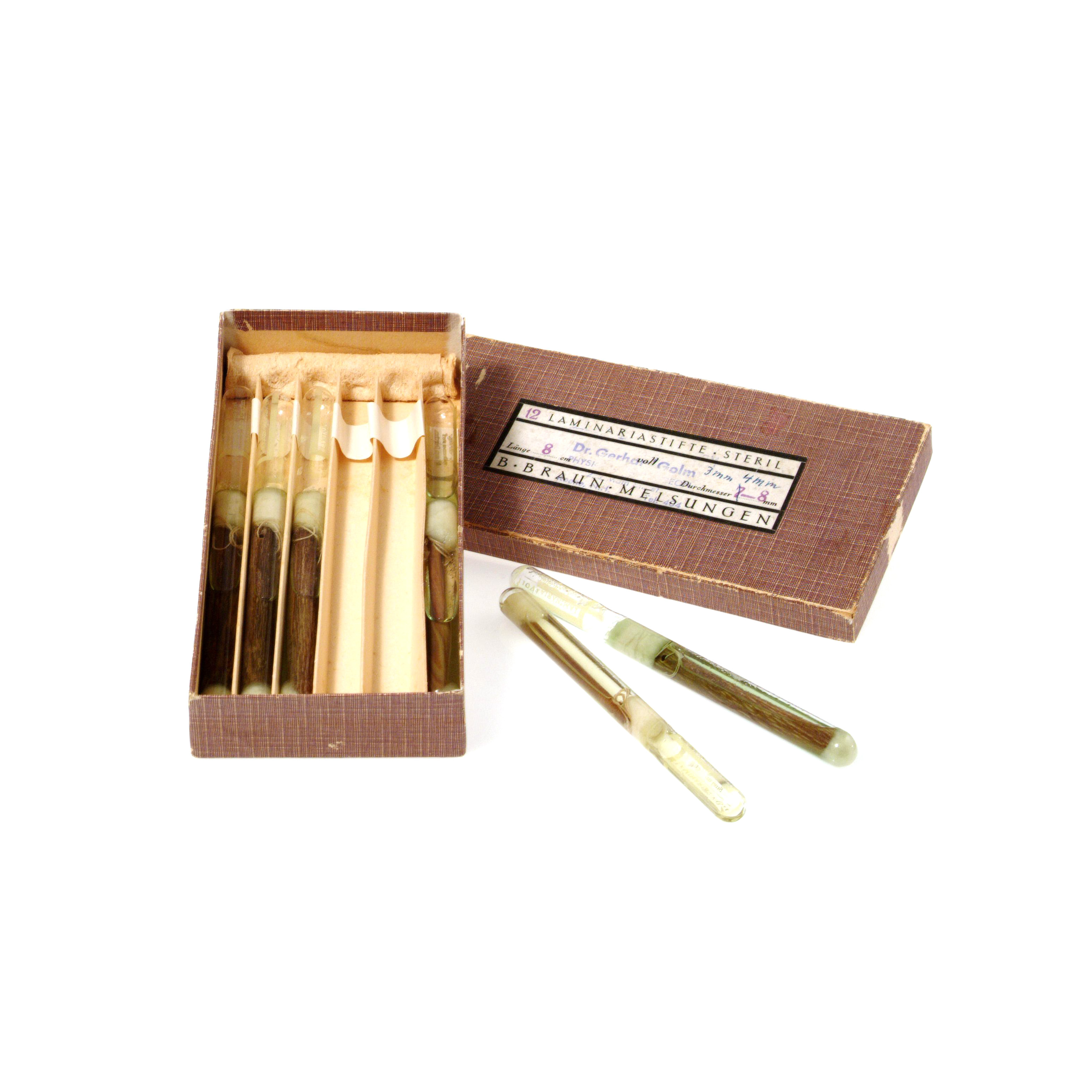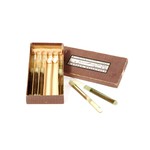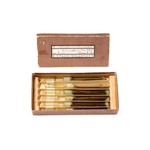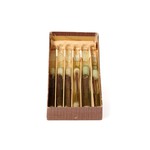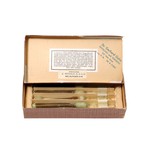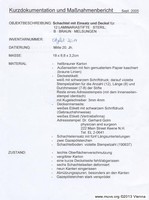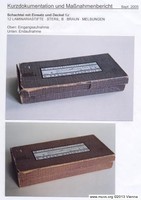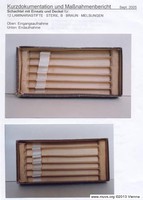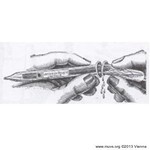Laminaria Sticks
Brown box containing six laminaria sticks in liquid. Each one is eight centimetres in length, and their diameters measure three, four and eight millimetres.
For approximately 100 years, sticks of dried kelp belonging to the genus Laminaria have been used to induce gradual opening or dilation of the cervix. As soon as the stick is inserted, it begins to absorb liquid, eventually swelling to four to six times its original diameter. This enlarges the cervix, facilitating the use of gynaecological instruments, such as suction tubes or curettes. Nowadays, sticks of synthetic materials that absorb liquid and swell are used (e.g., Lamicel®).
A white thread is attached to the opposite end of the stick for easy removal. Original packaging, open.
Before the development of modern methods for dilating the cervix with substances such as prostaglandins or Mifegyne®, laminaria sticks were the best and most commonly used. They are still popular in the USA because Mifegyne® is much more expensive there than in Europe.
A quotation from the 1930s mentions the disadvantages involved with their use: “Whenever dilators are applied to a closed cervix during an abortion, one must be extremely careful, as it tears quite easily. When inducing dilation with laminarin, using several thin sticks rather than one with a larger diameter is preferable, as there is a high likelihood of strangulation, which would prevent the stick’s removal.”
From: August Heisler, Dennoch Landarzt - Erfahrungen und Betrachtungen aus der Praxis (‘A Country Doctor All the Same - Experiences and Observations Based on Daily Practice’), Munich, 1933
Laminaria sticks are suitable for a number of different applications because of the useful substances they contain. In 2007, the German Botanical Society chose Laminaria Algae of the Year to make the general public aware of the fact that these plants are the Earth’s most important producers of oxygen.
